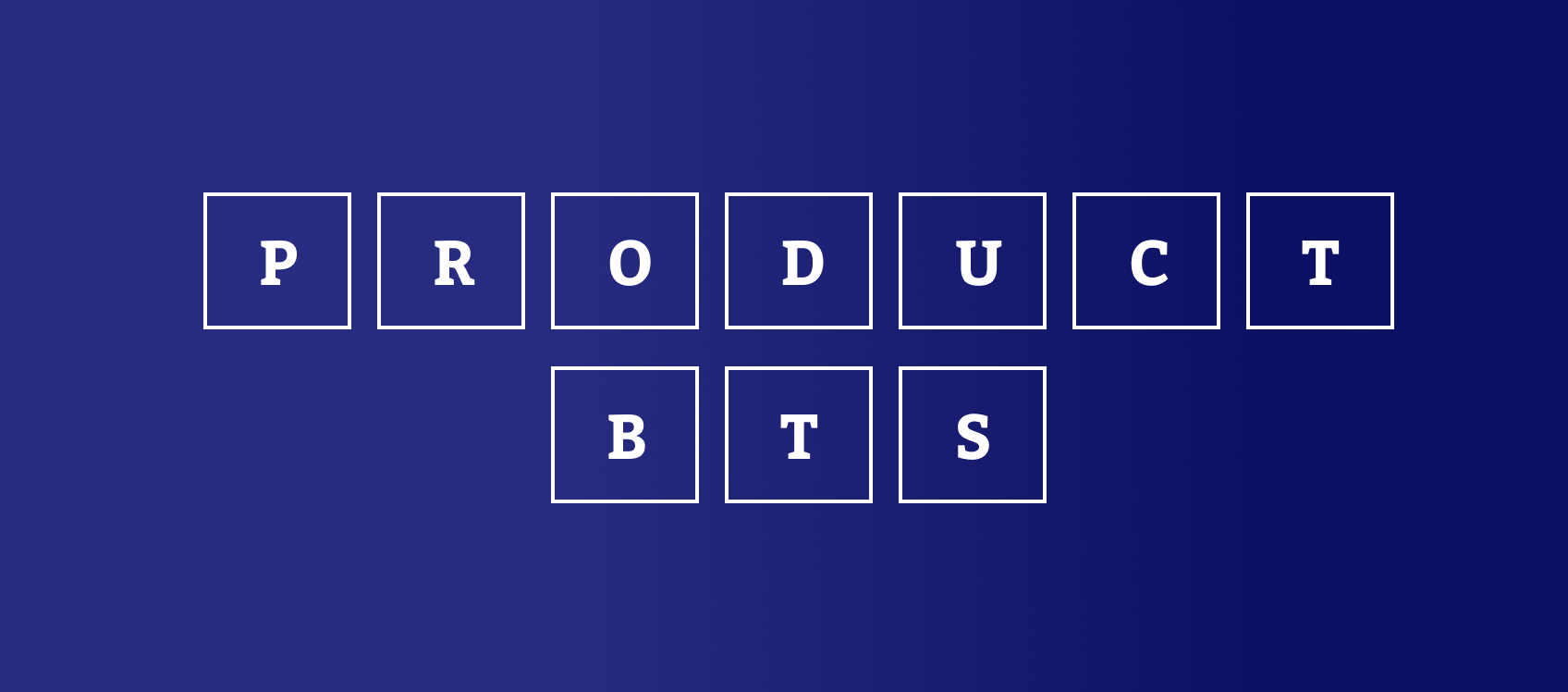Calendly, A SaaS (Scheduling as a Service) tool that automates the process of scheduling meetings. It was founded in 2013 by Tope Awotona, who was frustrated with the time-consuming and inefficient process of scheduling meetings with colleagues.
From multiple failures in e-commerce businesses, where he had no passion and motivation. Tobe decided to take a little sabbatical from starting businesses.
And I decided that my next business was not going to be something in which I was, you know, so that the businesses that I started before that I started them, because I wanted to start a business, the businesses were not started because there was a big unmet need that needed to be served.
And this time around, I would make sure that it was something that I was passionate about.
— Tope Awotona
Tope found a problem that he himself was facing, and tried to look for solutions to use. He didn’t find any good commercially available tool for scheduling meetings online. So after months of researching and using all the available tools on the market, Tobe decided to go all in for Calendly. He invested around $50k to build the MVP by a dev company based in Ukraine.
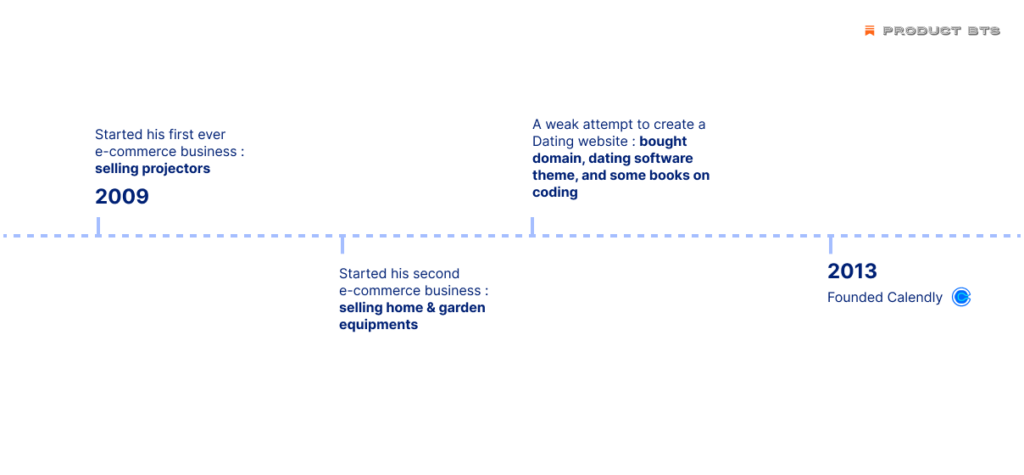
I wasn’t looking to start a business, I was just looking to buy something. And there was just really nothing on the market that did it. (for appointment scheduling)
And it got me thinking, but because I had all this failed businesses, I was a little gun shy, right. And so I spent many months trying to find reasons not to do it.
— Tope Awotona
Accidental Freemium
Calendly was launched as a free product, but Tope had intentions to launch this as a paid product. The reason was ‘He ran out of money’….yes you got it right.
And it was free. You know, because we actually ran out of money, the plan was to make it a paid product. But we didn’t get around to build into billing features and doing the billing integration.
— Tope Awotona
This turned out to be one of the best decisions that he didn’t make. The product was free, so it grew really fast. As many people used it very easily and it gradually became viral. By the time he built the billing feature, he made the basic product free and it became an ‘accidental freemium’.
How Calendly make it to the first 1000 users?
The Ukranian dev company was working with another company in the Bay area, called Bright Bytes (Data And Analytics Platform For Education). Folks at Bright Bytes started using it before it was even public. Their customer success started using calendly to schedule meetings with parents in K through 12. And those parents saw calendly, and they used it for parent-teacher conferences.
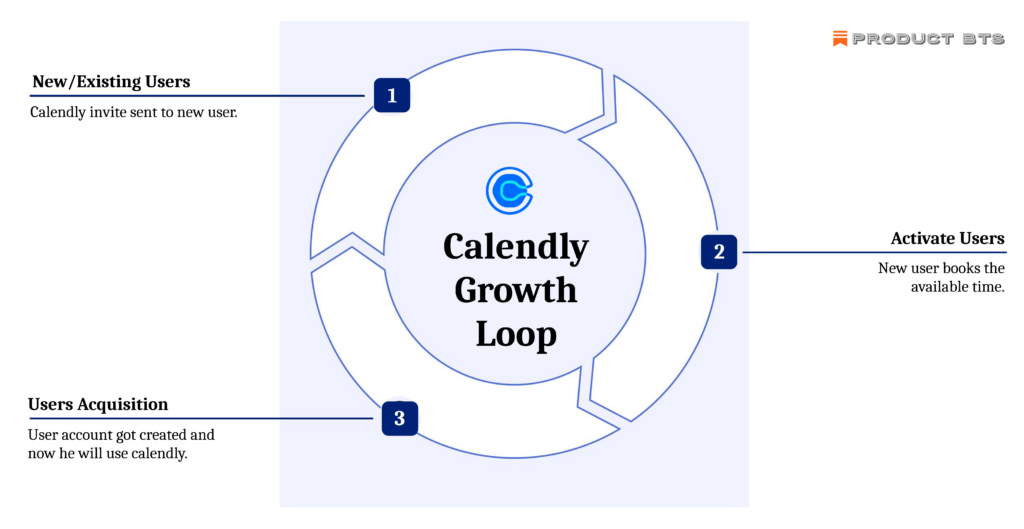
Calendly is the classic example of Product-led acquisition which fuels its virality. PLA has compounding effects. New users invite more users who invite more users.
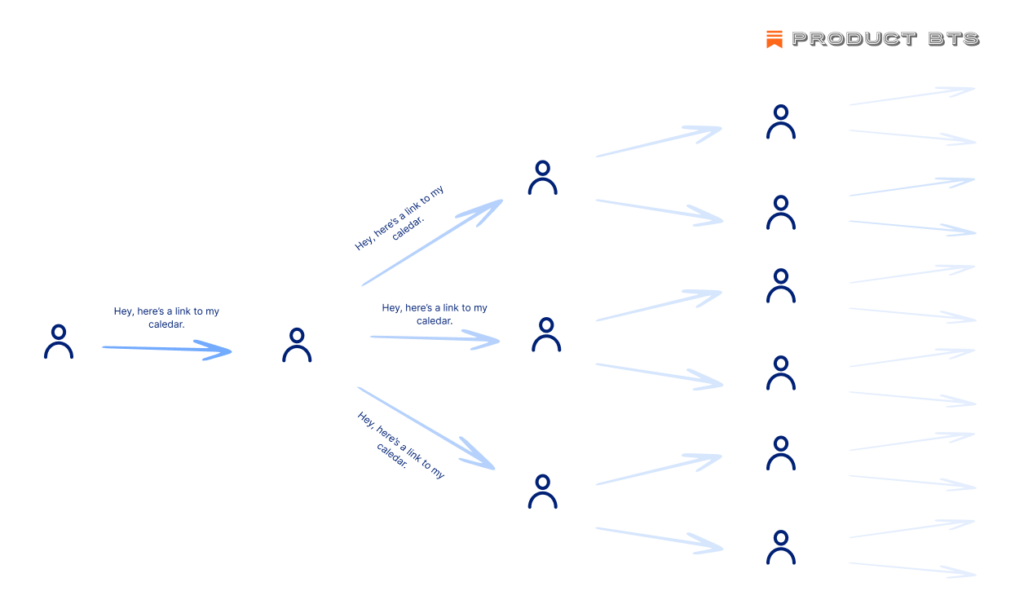
⭐ 70% of new user acquisition comes from this invitation virality.
Calendly rapid growth: Product-led growth
Calendly massive growth accounts to its product-led growth motion where the product itself serves as the primary driver for acquiring, converting, and retaining users.
The driving forces behind Calendly PLG motion include:
- Easy to use and get started: Calendly is incredibly easy to use and get started with. Users can create a Calendly account in minutes and start scheduling meetings immediately. This makes it easy for new users to try Calendly and to experience its value firsthand.
- Free plan with generous usage limits: Calendly offers a free plan with generous usage limits. This allows users to try the product without any risk and to get a good sense of its features and capabilities before upgrading to a paid plan.
- Viral loops and network effects: Calendly is designed to encourage users to share it with others. When a user schedules a meeting with someone using Calendly, that person is automatically introduced to Calendly and is likely to start using it themselves. This creates a viral loop that helps Calendly to attract new users and to grow its user base.
- Integrations with other popular tools: Calendly integrates with a wide range of other popular tools, such as Salesforce, Google Calendar, and Outlook. This makes it easy for users to use Calendly with their existing workflows and to manage their scheduling needs in one place.
- Focus on user experience and satisfaction: Calendly is constantly focused on improving the user experience and satisfaction. The company regularly releases new features and updates, and it is always open to feedback from its users. This focus on user experience has helped Calendly to build a loyal user base and to create a product that people love to use.
Calendly has been able to attract millions of users and grow into a multi-billion dollar business by focusing on building a product that is easy to use, valuable, and shareable.
Calendly’s Continued Growth: What’s Driving It?
Apart from viral loops and freemium models that have acquired millions of users. But now what’s the next big thing for Calendly?
As Calendly has grown, it has reached a saturation point with its PLG model. This is because PLG models are typically limited to solo users who can pull out a credit card and buy the product.
PLG can get you into the several hundreds of millions of dollars in revenue scale. But typically the ACV is really low, or the account value of those users.
— Annie Pearl (CPO at Calendly)
To continue growing, Calendly is expanding into new markets and reaching new customers. They are now focusing on team and departmental use within organizations, rather than just individual users. And the company has seen faster growth in its team business.
However, selling to enterprise teams is different from selling to solo users. Enterprise teams typically have a more complex buying process and require more personalized attention. This means that Calendly is shifting from its PLG model to adding a sales motion.
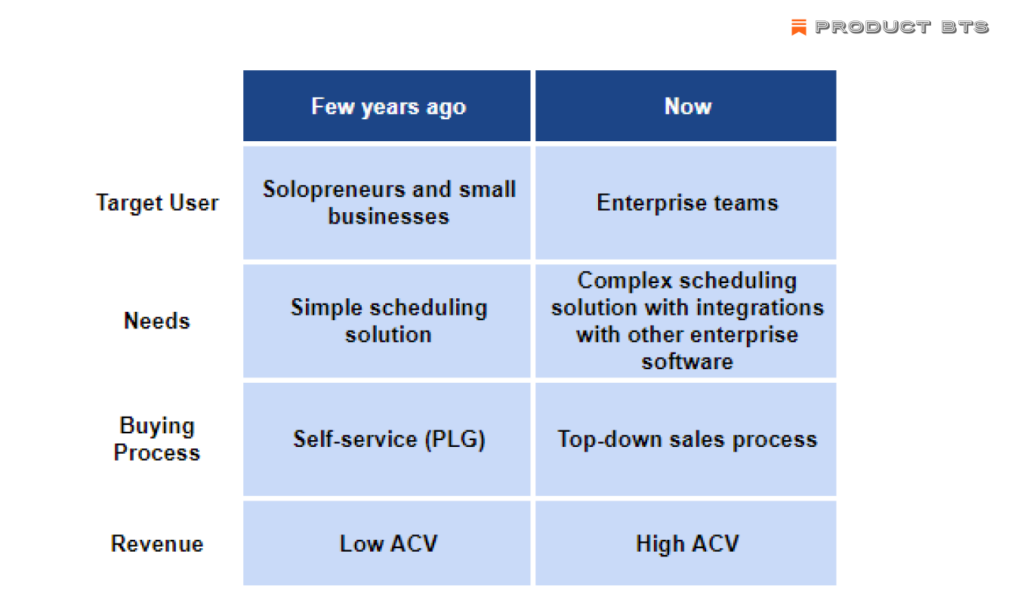
Here are some of the benefits that Calendly can expect from focusing on enterprise teams:
- Larger addressable market: Enterprise teams are typically much larger than solo users. This means that Calendly can reach a much larger market by focusing on enterprise teams.
- Higher average contract value (ACV): Enterprise teams are typically willing to pay more for software solutions than solo users. This means that Calendly can generate more revenue by focusing on enterprise teams.
- More recurring revenue: Enterprise teams are more likely to sign up for recurring contracts than solo users. This means that Calendly can generate a more stable and predictable revenue stream by focusing on enterprise teams.
Overall, Calendly’s decision to shift its target users from individual users to department heads/CIOs. This strategic move will help Calendly continue growing and achieve its long-term goals.
The Bottom Line: Do something you are motivated about.
Top Calendly statistics
- Calendly has over 10 million users worldwide.
- Over 50,000 businesses are using Calendly.
- Over 200 million meeting schedules have been made.
- Calendly’s valuation is $3 billion+.
📚 Further study
